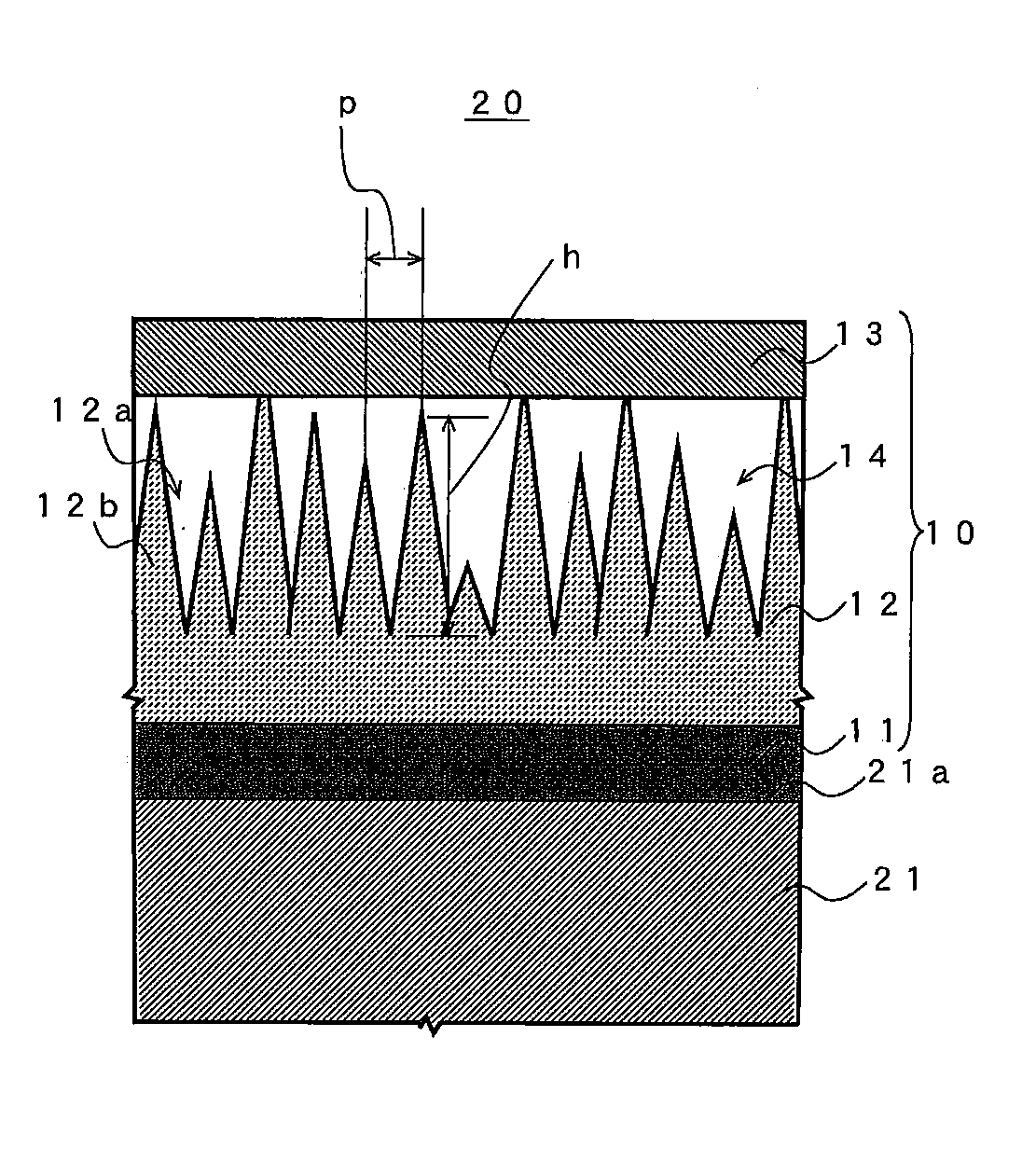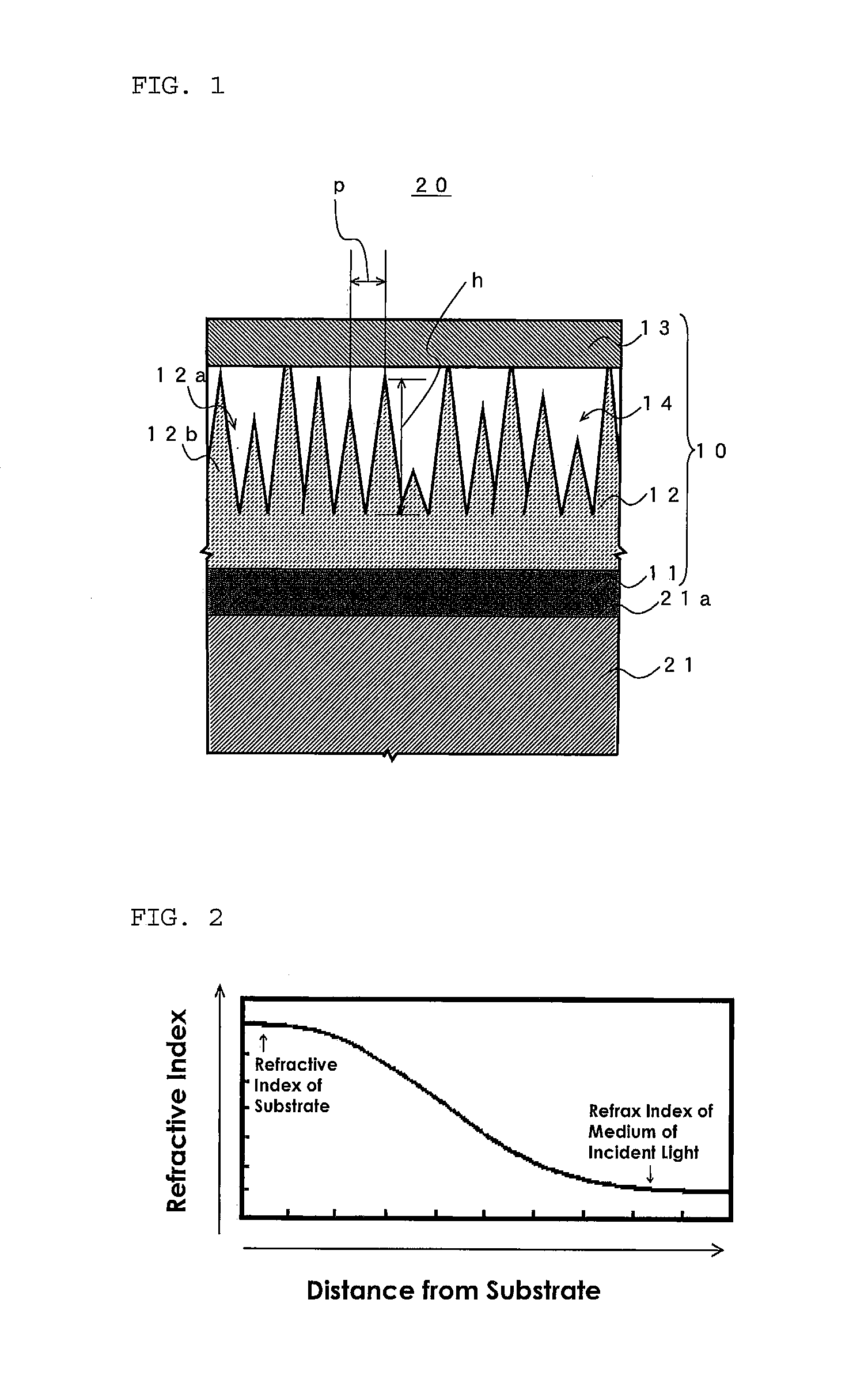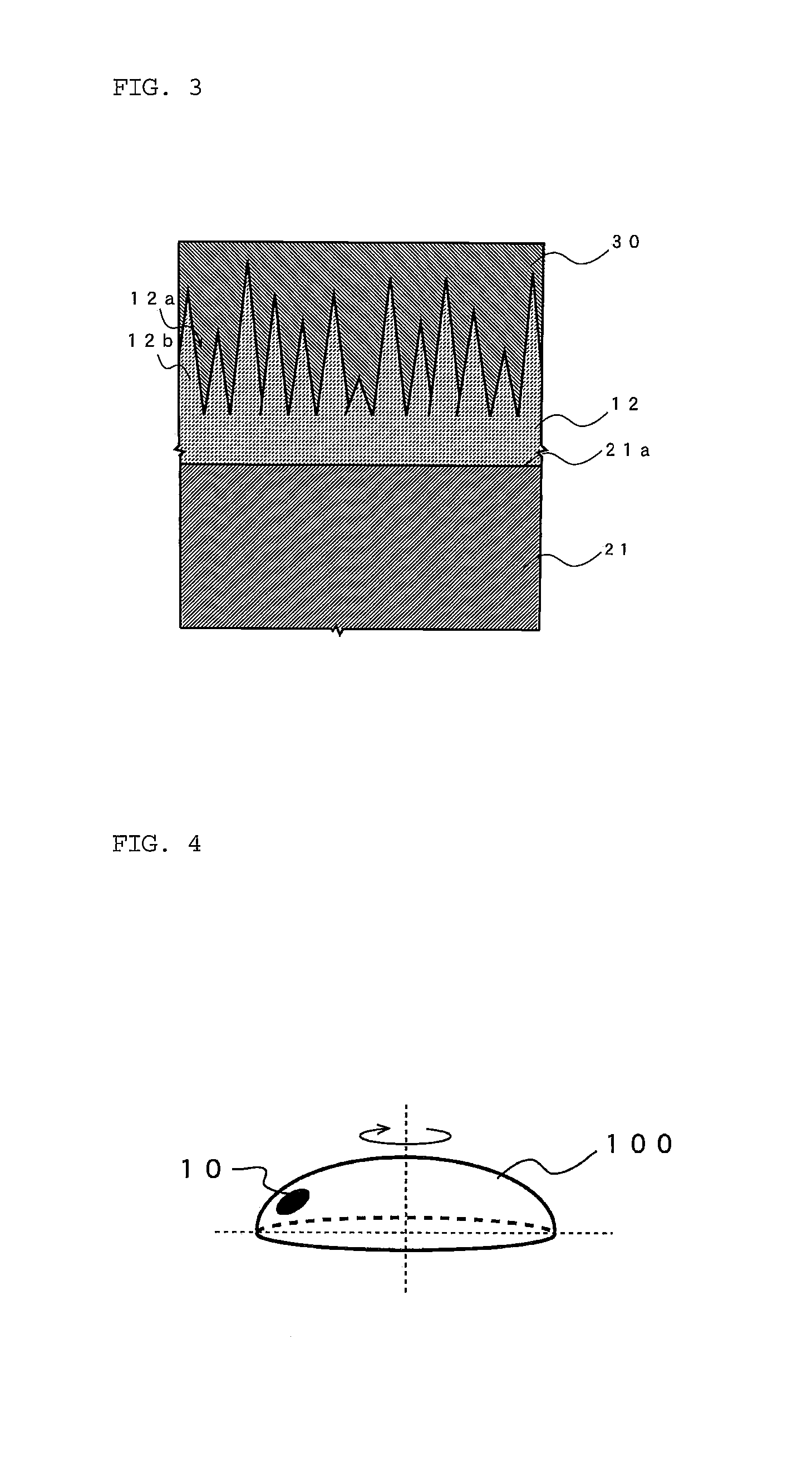Anti-Reflection Film and Method for Manufacturing Anti-Reflection Film
a technology of anti-reflection film and anti-reflection film, which is applied in the direction of instruments, coatings, optics, etc., can solve the problems of poor anti-reflection performance, poor scratch resistance, and easy mechanical damage to the surface of the concave-convex nanostructure, so as to reduce the reflection of incident light, improve the anti-reflection film scratch resistance, and reduce the effect of incident light reflection
- Summary
- Abstract
- Description
- Claims
- Application Information
AI Technical Summary
Benefits of technology
Problems solved by technology
Method used
Image
Examples
example 2
[0089]In Example 2, a glass lens made of N-BK7 glass (nd=1.52) manufactured by SCHOTT AG Corporation was used as the optical element 21. The concave-convex nanostructure 12 made of the PMMA resin was formed on the optical element 21. After that, SiO2 as the inorganic light-transmitting material was used as the raw material for deposition and the outer side of the concave-convex nanostructure 12 was covered with the cover layer 13 to manufacture the anti-reflection film 10 and the anti-reflection optical element 20 of Example 2. The steps of forming the respective layers will be more specifically described below.
[0090]First, a PMMA resin film was formed on the optical surface 21a by a spin coating method. The concave-convex nanostructure 12 was formed on the PMMA resin film in a similar method to Example 1. In the concave-convex nanostructure 12 formed in Example 2, the pitch width of the convex part 12b was about 100 nm to 200 nm, and the height h of the convex part 12b was about 12...
example 3
[0091]The anti-reflection film 10 and the anti-reflection optical element 20 of Example 3 were manufactured in a similar manner to the anti-reflection film 10 and the anti-reflection optical element 20 of Example 2 except that ZrO2+TiO2 was used as the inorganic light-transmitting material constituting the cover layer 13 and the film thickness of the cover layer 13 was 5 nm. The refractive index (nc) and the optical thickness (nc×dc) of the cover layer 13 were 1.8 and 9 nm respectively. The reference wavelength λ0 is 550 nm. Thus, the relationship in the expression (1) is satisfied.
example 4
[0092]In Example 4, a glass lens made of optical glass (product name: S-LAH55 (nd=1.83) manufactured by OHARA INC.) was used as the optical element 21. An optical thin film composed of a three-layer equivalent stack having a layer construction shown in Table 3 was formed as the base layer 11. Then, the concave-convex nanostructure 12 made of the PMMA resin was formed on the base layer 11. After that, MgF2 as the inorganic light-transmitting material was used as the raw material for deposition and the outer side of the concave-convex nanostructure 12 was covered with the cover layer 13 to manufacture the anti-reflection film 10 and the anti-reflection optical element 20 of Example 4. The steps for forming the respective layers will be more specifically described below.
[0093]First, the method for forming the base layer 11 will be described. An Al2O3 film was deposited as a first layer on the optical surface 21a of the glass lens so as to have a physical thickness of 29.4 nm by the vac...
PUM
| Property | Measurement | Unit |
|---|---|---|
| refractive index nc | aaaaa | aaaaa |
| refractive index | aaaaa | aaaaa |
| refractive index | aaaaa | aaaaa |
Abstract
Description
Claims
Application Information
 Login to View More
Login to View More - R&D
- Intellectual Property
- Life Sciences
- Materials
- Tech Scout
- Unparalleled Data Quality
- Higher Quality Content
- 60% Fewer Hallucinations
Browse by: Latest US Patents, China's latest patents, Technical Efficacy Thesaurus, Application Domain, Technology Topic, Popular Technical Reports.
© 2025 PatSnap. All rights reserved.Legal|Privacy policy|Modern Slavery Act Transparency Statement|Sitemap|About US| Contact US: help@patsnap.com



